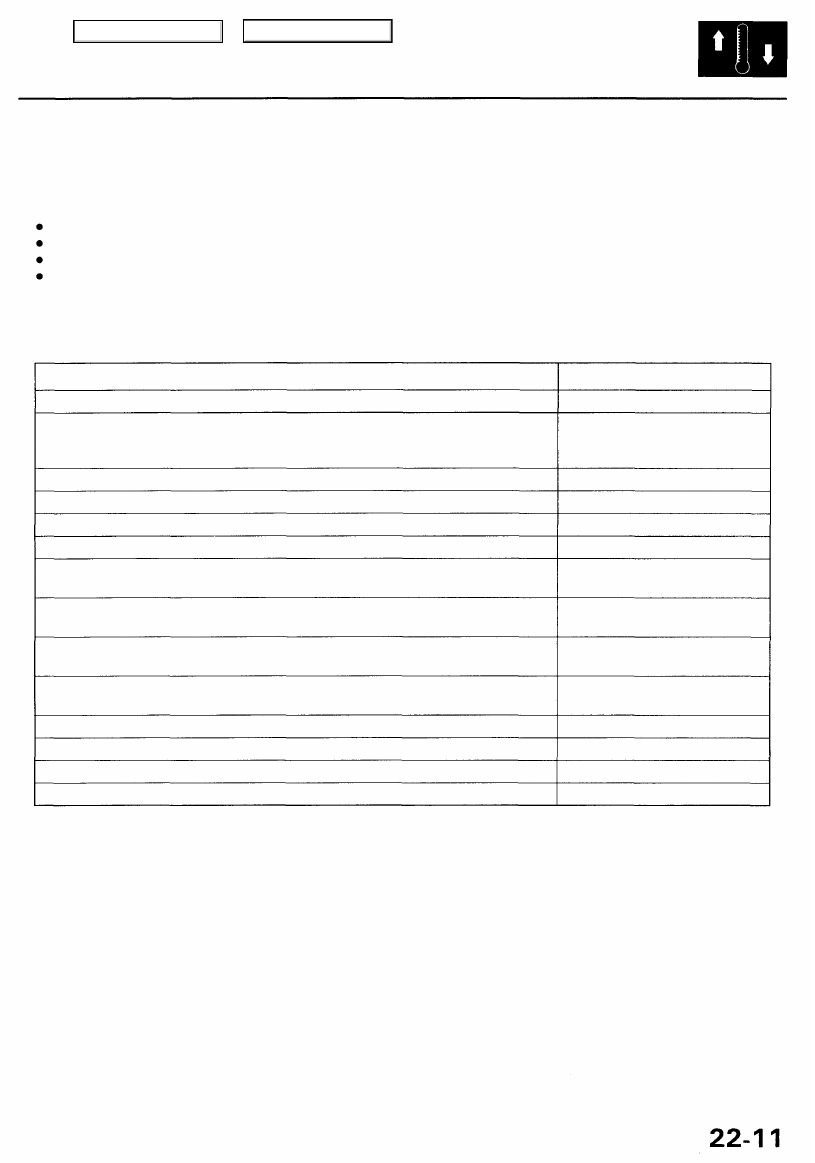Acura RL (1996-2004 year). Manual - part 590

Troubleshooting
Symptom Chart
For electrical malfunctions which are indicated by the self-diagnostic system, refer to self-diagnosis function (see next
page).
NOTE:
Check the engine coolant level, and allow the engine to warm up before troubleshooting.
Any abnormality must be corrected before continuing the test.
Because of the precise measurements needed, use a multimeter when testing.
Before performing any troubleshooting procedures check:
— Fuses No. 37 (40 A), No. 47 (20 A), No. 50 (20 A), No. 56 (7.5 A) in the under-hood fuse/relay box, and No. 3 (7.5 A), No.
5 (20 A) in the under-dash fuse/relay box
— Grounds No. G201, G301, G302, G401, G402, G404
— Cleanliness and tightness of all connectors
Symptom
Recirculation control doors do not change between FRESH and RECIRCULATE.
The blower motor does not run immediately even though the engine is fully warmed
up. (NOTE: The temperature control dial must be set between 61 °F [18°C] and 89°F
[32°C].)
No heater and A/C in either manual or AUTO modes.
Both fans do not run for engine cooling (but they both run with the A/C on).
Both fans always run at high speed for engine cooling.
Both fans always run at high speed with the A/C on.
Radiator fan does not run at high speed (but condenser fan runs at high speed, and
both fans run at low speed).
Condenser fan does not run at high speed (but radiator fan runs at high speed, and
both fans run at low speed).
Both fans do not run at low speed, and radiator fan does not run at high speed (but
condenser fan runs at high speed).
Both fans do not run at low speed, and condenser fan does not run at high speed
(but radiator fan runs at high speed).
Both fans do not run at low speed (but both fans run at high speed).
Both fans do not run at high speed (but both fans run at low speed).
Compressor clutch does not engage.
Both fans and compressor do not work at all.
See page
Main Menu
Table of Contents